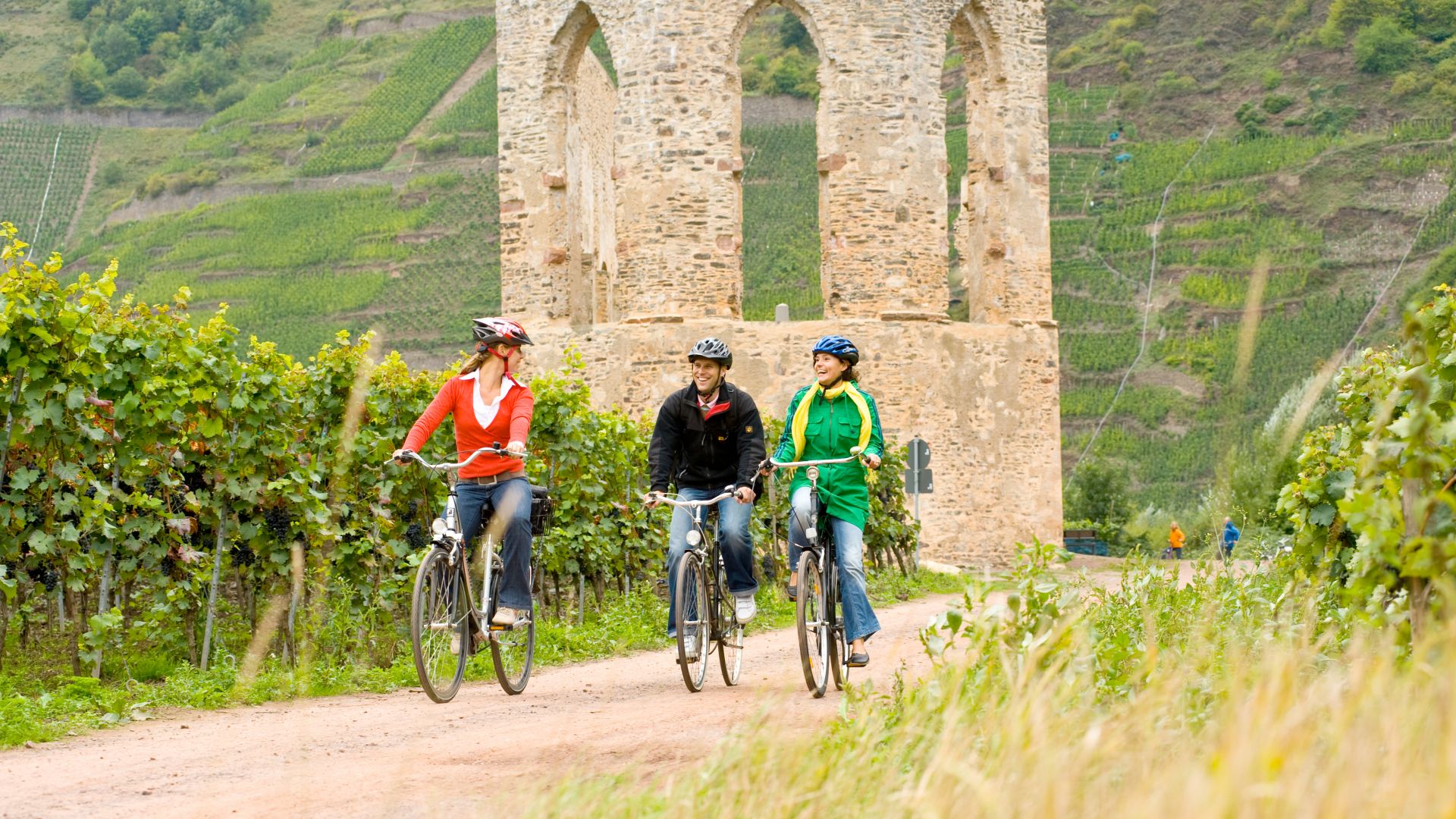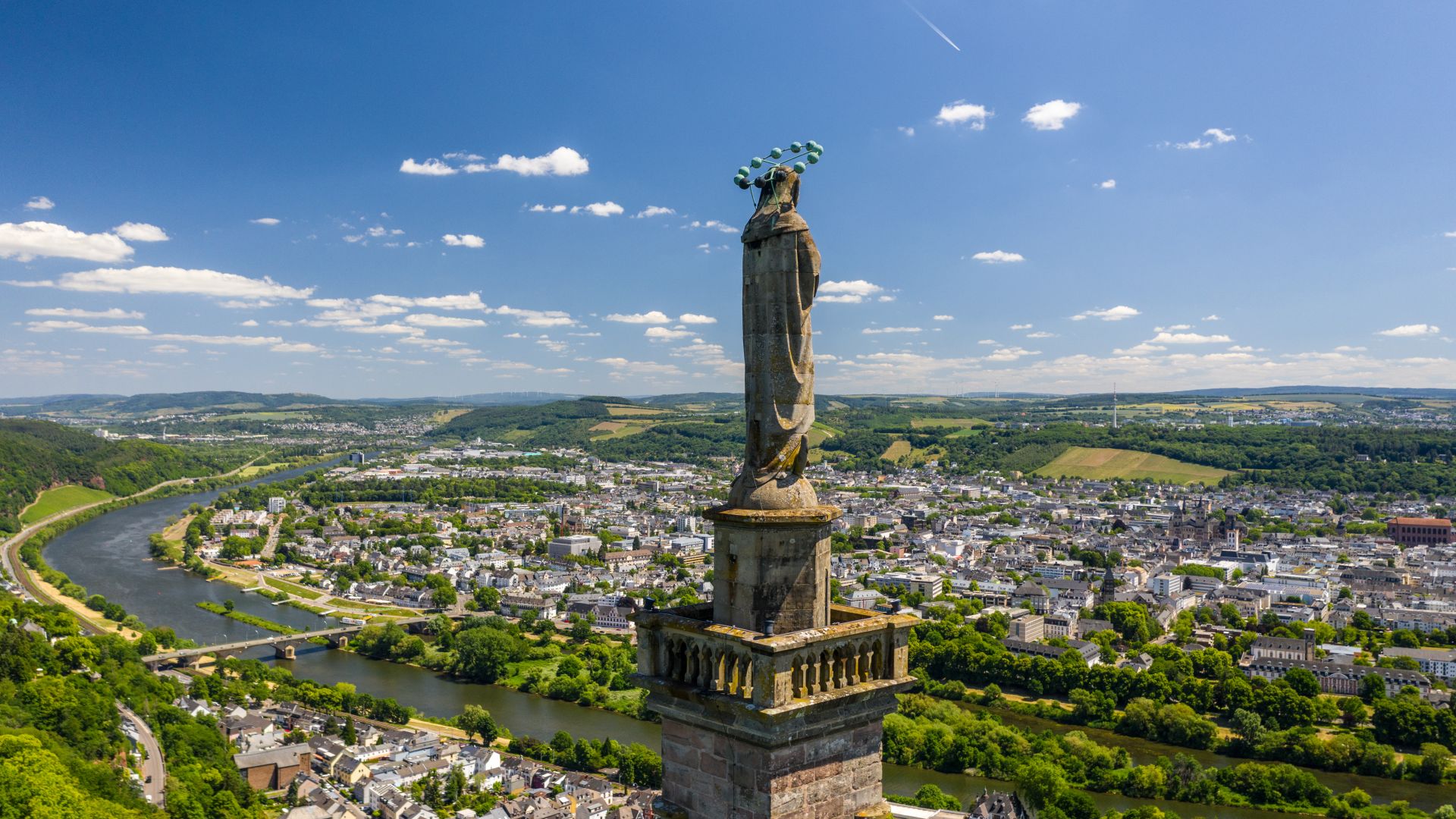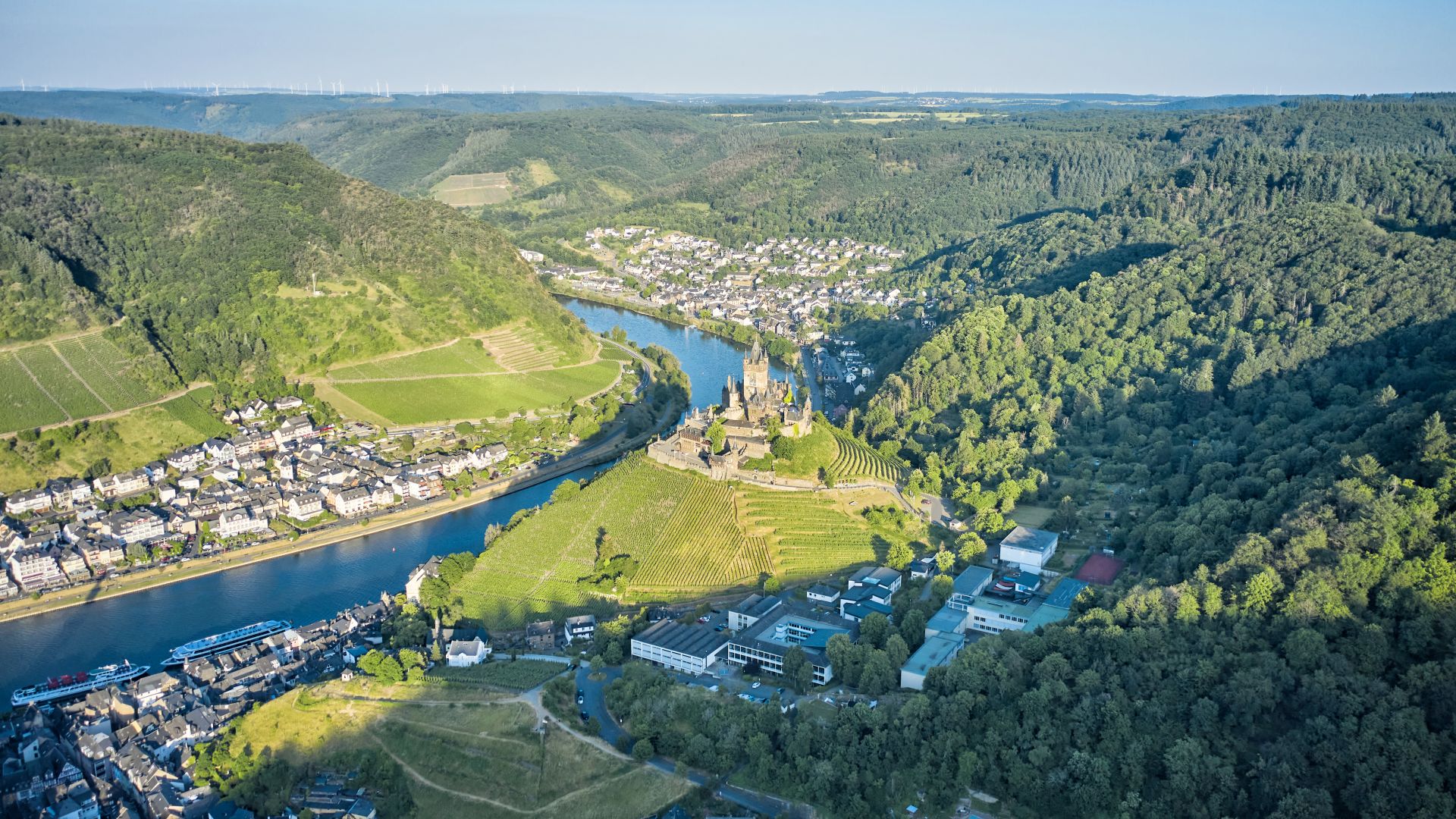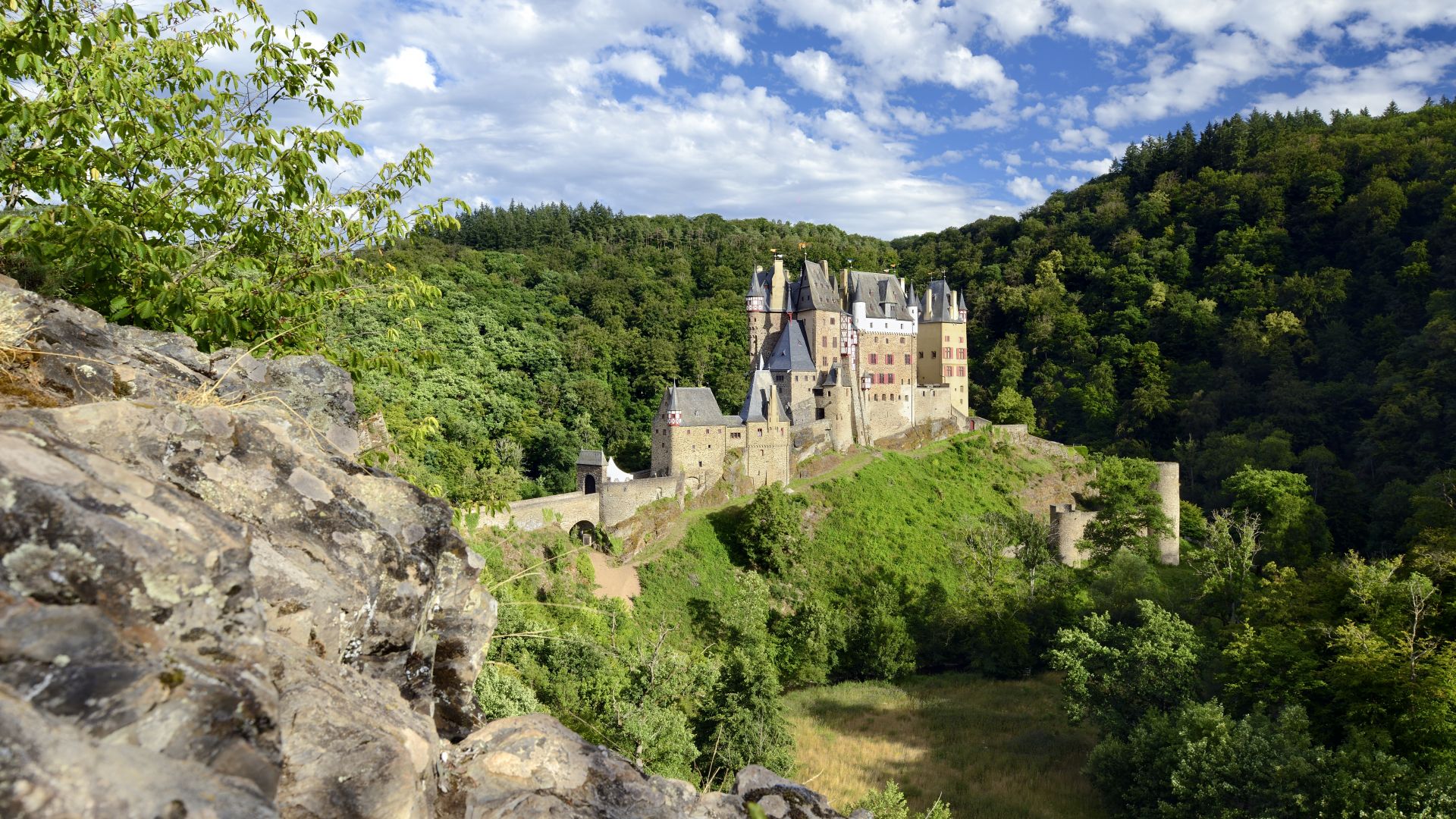Inspiring Germany
Moselle valley: castles, wine and charming little towns
Green vineyards as far as the eye can see, as well as enchanting villages with a wealth of history and impressive castles, make the Moselle and its surrounding area one of the most impressive river landscapes in the heart of Europe.
The Moselle is a source of endless delight, starting in France, winding round the outskirts of Luxembourg and finally reaching Germany. The river, which is celebrated in numerous legends and songs, makes its way through Rhineland-Palatinate, forming countless loops extending more than 230 kilometres. In Koblenz, it finally flows into the Rhine. The Moselle is often compared to other super-rivers of Europe, especially because of the castles, wines and myths surrounding it. But the Moselle is gentler and more graceful. With some exceptions – particularly in areas where some of the vineyards are quite steep. The Calmont is the record holder when it comes to steep slopes, inclining up to 60 degrees. However, wines with a strong character also mature on the gentler slopes and have done so for two thousand years. Traben-Trarbach was once even considered the second most important wine trading centre on the continent after Bordeaux, and the prosperity of this region's long-standing and global wine trade is evidenced by a number of highlights in the region, from Roman heritage and half-timbered gems to Berlin's Art Nouveau architecture.
Active on the Moselle: on, by or high above the river
 Neef: Roman ruins on the Moselle cycle path
©Dominik Ketz
Neef: Roman ruins on the Moselle cycle path
©Dominik Ketz
There are many ways to move through the Moselle valley, the most relaxing of which is probably by boat, with the landscape drifting gently by. The area can be experienced more intensively by bike. In 2024, the ADFC cycling association recognised the Moselle Cycle Route as a top cycling route and awarded it four stars. The 365-kilometre-long Moselsteig Trail has also been presented with the 'Germany Quality Hiking Trails' and 'Leading Quality Trail – Best of Europe' awards. And it's no wonder: your route switches between brisk hiking on forest and grassy ground, occasionally a short climb on rocky paths, and sometimes a stroll along wide paths between the vines.
Trier: witnesses to a great past
 Trier: Marian column with a view of the Moselle
©Rheinland-Pfalz Tourismus GmbH (Dominik Ketz)
Trier: Marian column with a view of the Moselle
©Rheinland-Pfalz Tourismus GmbH (Dominik Ketz)
There are many worthwhile detours along the way, especially the one to Trier. As one of the oldest cities in Germany, its links to the Romans are unlike any other in the country. The World Heritage Site ensemble of 'Roman Monuments, Cathedral and Church of Our Lady in Trier' emphasises this. This also includes the Porta Nigra, the best-preserved Roman city gate north of the Alps, and the remains of the once-huge Barbara and Imperial Baths.
With so much knowledge to be digested, why not take it all in over a glass of Riesling, the absolute star of the Moselle, in one of the numerous wine taverns on the banks of the river? There's no shortage of romantic places to stop for refreshments, just as there's no shortage of small towns in general. These complete the idyllic setting of river and vineyards, with plenty of half-timbered buildings, cobbled streets and quaint rows of houses nestled in between. Among the most beautiful spots are Bernkastel-Kues with its old town and the impressive Landshut castle ruins, as well as Ediger, Traben-Trarbach, Zell and Beilstein, nicknamed the 'Sleeping Beauty of the Moselle'.
Cochem: a major attraction in the centre of the Moselle valley
 Cochem: Aerial view of the Reichsburg Cochem on the Moselle river
©DZT (Florian Trykowski)
Cochem: Aerial view of the Reichsburg Cochem on the Moselle river
©DZT (Florian Trykowski)
With only 5,000 inhabitants, the much-visited small town of Cochem stands out in the region, as well as its picturesque Reichsburg castle. Situated above the old town, the 'Neuschwanstein on the Moselle' seems like something out of a fairy tale. It's fitting, then, that 'The Star Money' was filmed here. Local anecdotes about Napoleon, who once spent the night here, William Turner, who painted on site, and the monarch Maria Theresa, who even left her four-poster bed here, also seem like fairy tales. Outside the castle, Germany's smallest district town scores even more points with colourful little houses, steep and narrow alleyways and the Pinner Cross observation deck, which can be reached by chairlift and from which you can gaze out over the Moselle loop far below.
Towering castles, exciting finale
 Wierschem: View of Eltz Castle
©DZT (Francesco Carovillano)
Wierschem: View of Eltz Castle
©DZT (Francesco Carovillano)
Proud views are a hallmark of the area anyway, as the remains of once-fortified castles sit enthroned on the Moselle heights. Where to start? It would be impossible not to mention the restored Eltz Castle, one of the most impressive fortifications in the whole of Germany, and Thurant Castle in Alken, the only double castle far and wide. Koblenz could also be described as a double river city, as the Moselle flows into the Rhine here at the Deutsches Eck. So if you can't get enough of castles, wine and charming towns, simply continue on to the Upper Middle Rhine Valley...